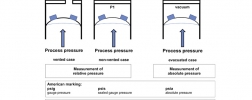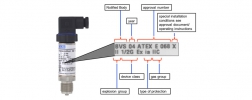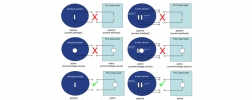The user is often faced with the question: What kind of pressure sensor should I use - a relative/gauge or an absolute pressure sensor? From food processing to petrochemical plants, to plastic injection moulding and many other industrial applications, pressure …
All posts by Stefan Heusel
Marking of pressure sensors and transmitters according to ATEX Guideline 94/9/EC – how to read the ATEX label on pressure sensors
Stefan Heusel | PressureIf pressure sensors, pressure transmitters and other field equipment are used in the vicinity of flammable gases or dust, they may be subject to marking in accordance with the ATEX product guideline 94/9/EC. ATEX requires the type label of the sensor to include the …
Electrical circuit for pressure sensors: when is a sensor active, and when passive?
Stefan Heusel | PressureWhen using pressure sensors, the output signals 0 … 20 mA, 4 … 20 mA and DC 0 … 10 V are frequently chosen in order for the sensor signals to be evaluated and further processed. For this, the signal output of the pressure sensor is usually connected to a …
Electronic pressure sensor/pressure transmitter or mechanical pressure indicator?
Stefan Heusel | PressureFor some years now, it has been possible to increasingly automate production processes, and by doing to to achieve substantial cost reductions in some cases. This raises the question: does it still make sense to use mechanical pressure measuring instruments? The …
Analogue output signals of pressure sensors 2: DC 0 … 10 V, DC 1 … 5 V, DC 1 … 10 V
Stefan Heusel | PressureApart from the current signals described in the article "Analogue output signals of pressure sensors 1", the voltage signals 0 … 10 V, 1 … 5 V and 1 … 10 V are used in industrial automation for the transmission of measured values. As with the current signals, …






